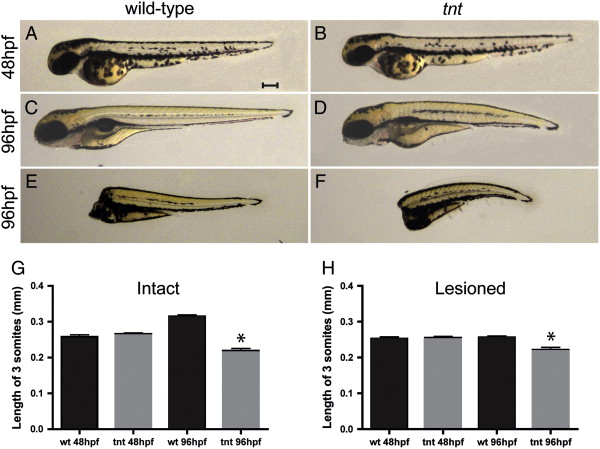Fig. 2
tnt larvae demonstrate paralysis and body shortening at 96 hpf, which can occur in the absence of brain input. Lateral views are shown of wild-type and tnt larvae and lesioned preparations. (A,B) Wild-type and tnt larvae are of similar length along the rostral–caudal axis at 48 hpf. Scale bar = 0.2 mm, applies to panels A–F. (C,D) At 96 hpf, tnt mutants are shorter than wild-type siblings. (E,F) At 96 hpf, tnt lesioned preparations, in which brain input was removed at 46 hpf, are shorter than wild-type, suggesting that the brain is not required for this aspect of the tnt phenotype. Quantification of a three-somite length is shown for (G) intact and (H) lesioned larvae (n = 8, p < 0.05).
Reprinted from Developmental Biology, 362(2), McKeown, K.A., Moreno, R., Hall, V.L., Ribera, A.B., and Downes, G.B., Disruption of Eaat2b, a glutamate transporter, results in abnormal motor behaviors in developing zebrafish, 162-171, Copyright (2012) with permission from Elsevier. Full text @ Dev. Biol.

